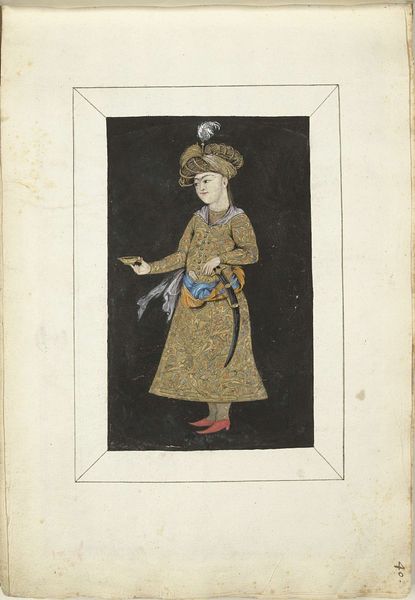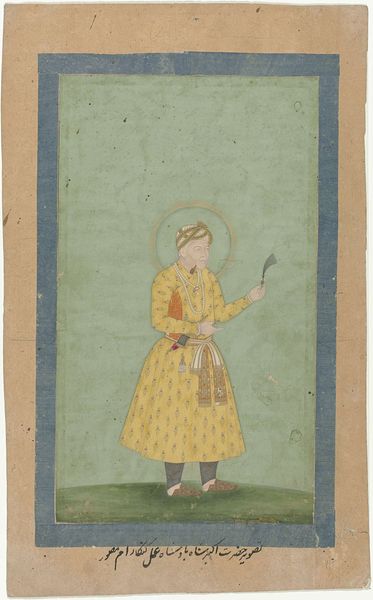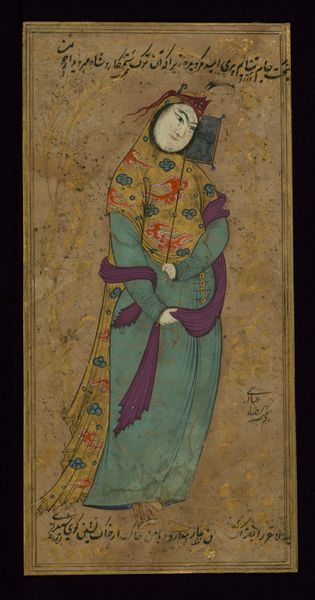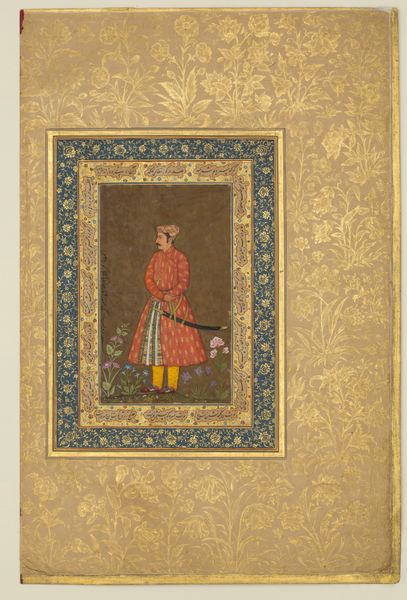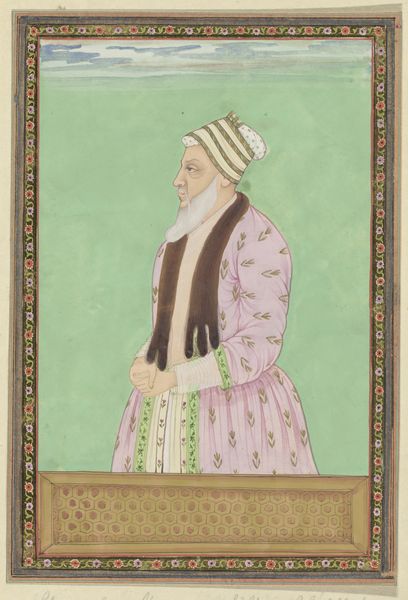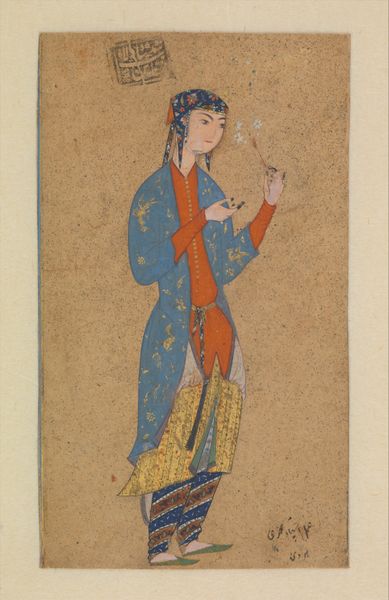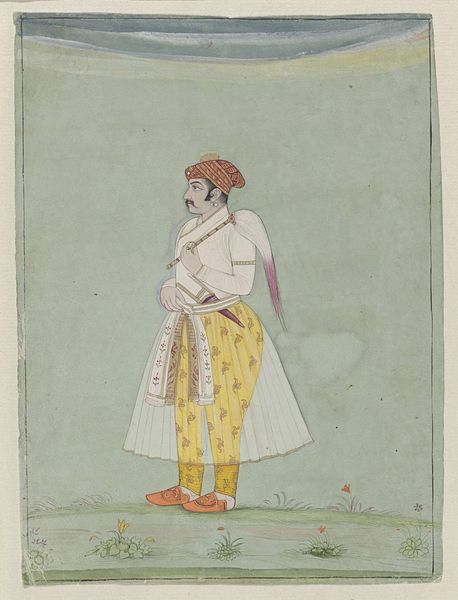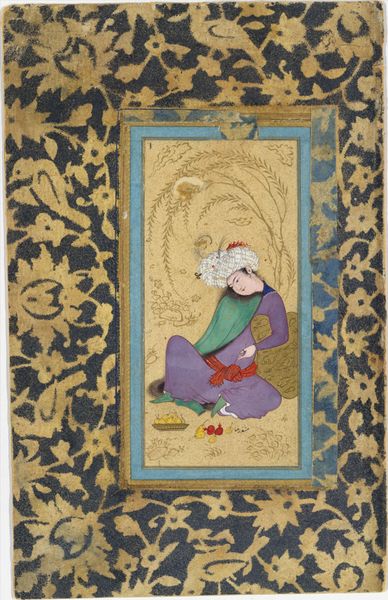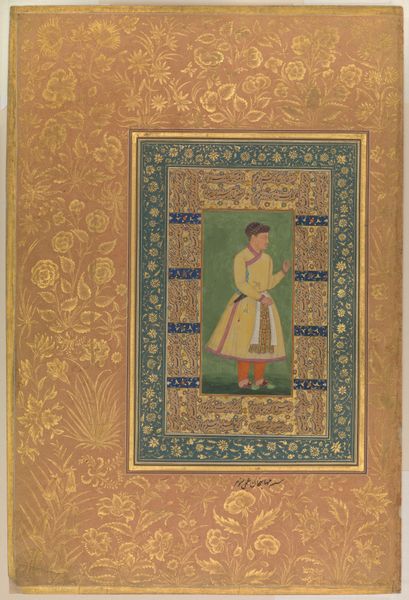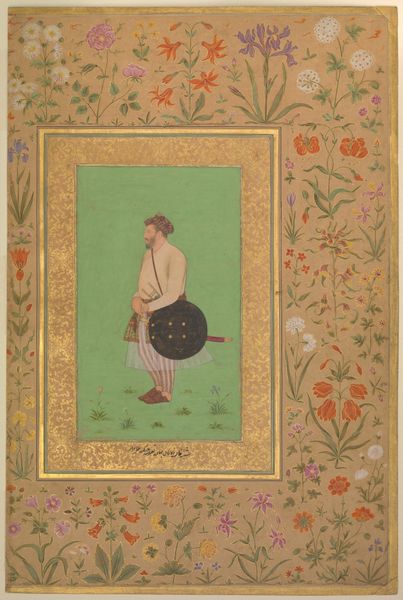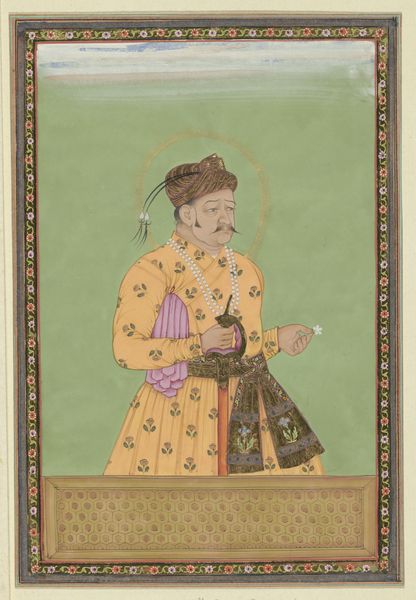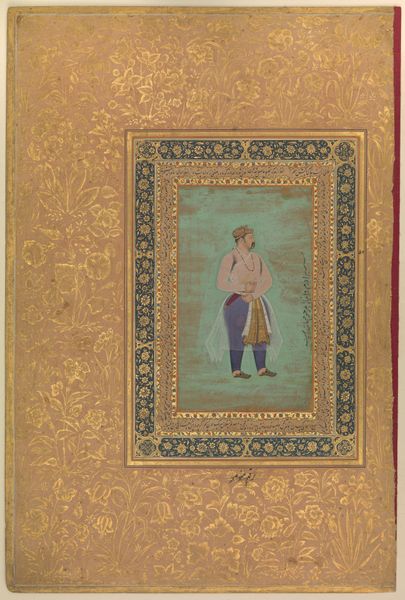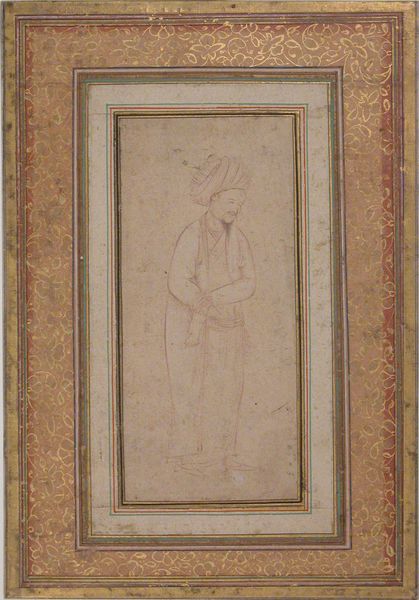
painting, paper, ink
#
portrait
#
painting
#
figuration
#
paper
#
ink
#
men
#
islamic-art
#
miniature
Dimensions: H. 8 3/8 in. (21.3 cm) W. 5 1/4 in. (13.3 cm)
Copyright: Public Domain
Art Historian: Here we have a piece entitled "Portrait of a Man," believed to have been created sometime between 1575 and 1625 by Riza-yi 'Abbasi. It's a delicate work executed with ink on paper. Artist: The man seems a bit melancholic, don't you think? Wrapped in what looks like a pale shroud or cloak, he's cinched at the waist with this vibrant green sash. And that slightly tilted hat... It adds a touch of nonchalance. Like he’s trying to look rakish, but he's also just a little sad. Art Historian: Well, portraiture during this period in Persia, especially miniature paintings such as this, were often less about capturing individual likeness and more about conveying social status, idealized beauty, or symbolic meaning within courtly settings. Artist: Status, you say? I get more of a 'lost-in-thought' vibe. His eyes are averted, and the colors, although subtle, evoke a dream-like state. That could have meant something very profound, right? Or maybe it was how you got people to sit still back then! Art Historian: Precisely. We also see examples of how these miniatures served as documents, portraying figures of importance within a complex network of power and influence. Artist: Still, looking at it now, centuries later, you almost strip all that away and get the human essence – this wistful character that Riza-yi 'Abbasi managed to capture. Makes you wonder what story is hiding behind the painting's veneer of tradition and social custom. What kind of anxieties are expressed by those who commissioned art? I would ask those commissioning art what are their fears, their love, their aspirations? Art Historian: And yet, knowing that it would have circulated amongst the elite—perhaps kept within an album or gifted amongst the court—changes how we receive that feeling. Artist: A conversation piece! Passed around, interpreted, each gaze adding another layer of meaning. We, standing here now, included. What a concept. Art Historian: Indeed. The work invites contemplation on both its aesthetic qualities and its function as a marker of cultural identity during a fascinating time. Artist: Well, I know what I'll be dreaming about tonight: green sashes, tilted hats, and the melancholic musings of a Persian gentleman.
Comments
No comments
Be the first to comment and join the conversation on the ultimate creative platform.
